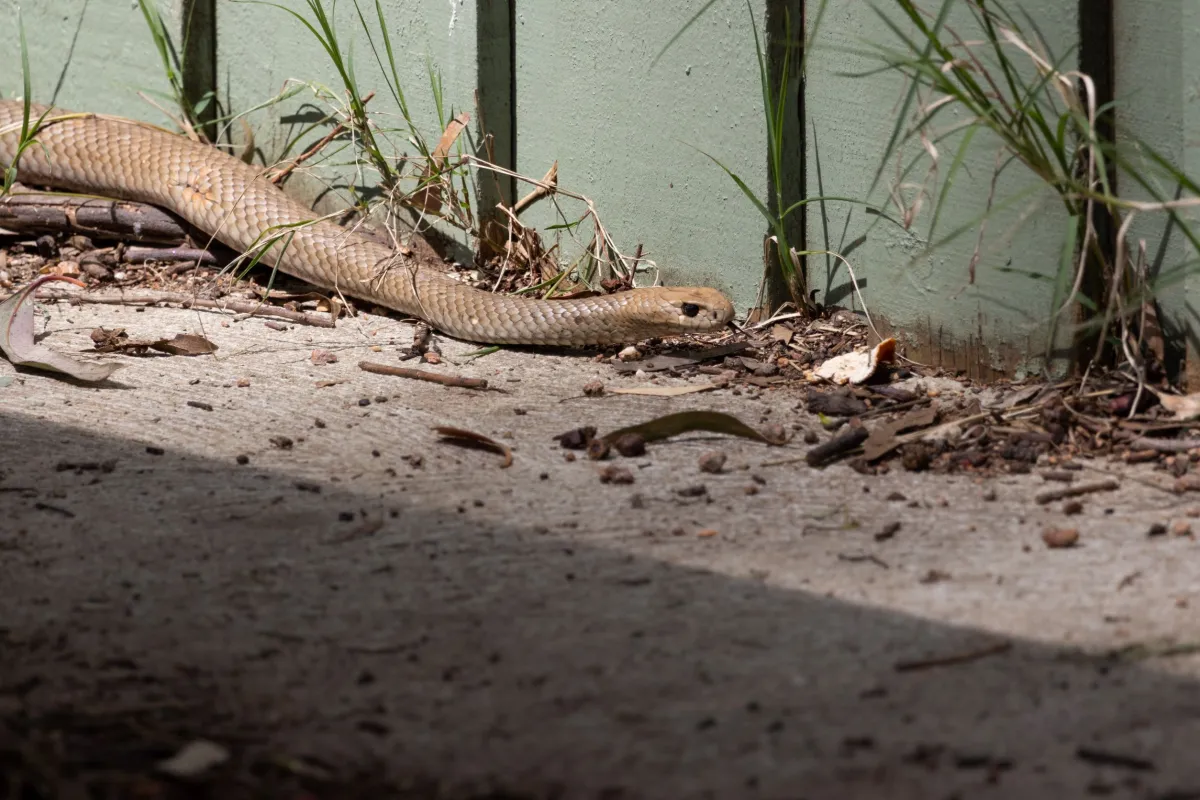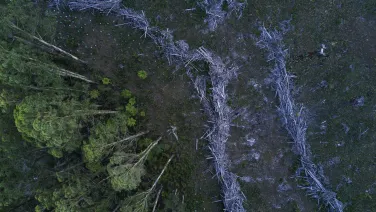Aussie snakes are undervalued: here’s how to be a friend from afar

We often worry about encountering snakes and how they impact us and our safety – but do you ever wonder about our impact on the lives and welfare of snakes?
Associate Professor Gavin Smith is a snake ecologist and environmental sociologist from ANU. He studies the behaviours and physiology of urban-adapted eastern brown snakes in Canberra. He explains that we interrupt their natural behaviours in many ways.
“People often overlook the fact that we have built – and continue to build - our properties and live our lives on the naturally occurring habitats of snakes and other reptiles,” says Associate Professor Smith
"Snakes and other reptiles have been forced to evolve and adapt to share degraded landscapes with humans and their domestic pets, a process that eastern brown snakes have specialised in for various ecological reasons.”
Most people are reluctant to tolerate snakes temporarily residing in or transiting through their properties for example.
Associate Professor Smith says this aversion and lack of understanding of snake behaviours and ecology contribute to the routine persecution of these supposedly protected, native animals.
“Snakes and other locally occurring reptiles are routinely injured or killed as a result of human, cat and dog attacks, vehicle, bike and lawnmower strikes, bird netting and other discarded rubbish, and from secondary rodenticide poisoning,” he says.
“I think it’s fair to say that urban-adapted snakes are under a lot of pressure with continuing habitat loss and contamination, as well as being subject to translocation from their home ranges by a growing number of professional and volunteer snake catchers who have emerged in response to this human—wildlife conflict.”

So how do we strike the balance of being a friend from afar to snakes?
“It is important for the Australian community to become more sensitive to the plight of native wildlife that is culturally undervalued, a category into which snakes certainly fall. We have to learn to perceive these animals not as some unbelonging enemy in our environment, but as intrinsic parts of the landscape and as critical servants to the balance of ecosystems, helping to control population numbers of rodents (and thus contributing to the reduction of plagues) and other creatures.
“We can keep our cats contained, as per recent ACT legislation, and put our companion dogs on a lead when out walking and attempt to train them to leave snakes and other reptiles alone. “We can also do things around our yards to make them less snake friendly, while acknowledging snakes might be periodic visitors.”
For better interactions between snakes and people, Associate Professor Smith suggests attending a snake awareness course to confront your fears about snakes and become scientifically-informed about how these animals operate, their desire to avoid confrontation, and how to be safe around them.
“It always pays to have specialised snake bite bandages available and to know your Australian snake bite first aid,” he says. “I strongly encourage people to wear gaiters when walking in the bush, stick to paths and tracks, and avoid traversing through long grass and dense vegetation.
“When we encounter snakes on our travels, we can reduce any harmful interaction by showing them calmness and respect, giving them plenty of room (and complete stillness if you’re in very close proximity) so they – or we – can move away safely.
“When driving, we need to pay more attention to native wildlife on or at the side of roads. I would also strongly encourage people to use wildlife friendly rodent controls where possible to avoid poisons entering the food web.”
Know any snake catchers and want to help the Associate Professor Smith gather research on Australian snakes? Share this questionnaire with them: Snake catching in Australia



